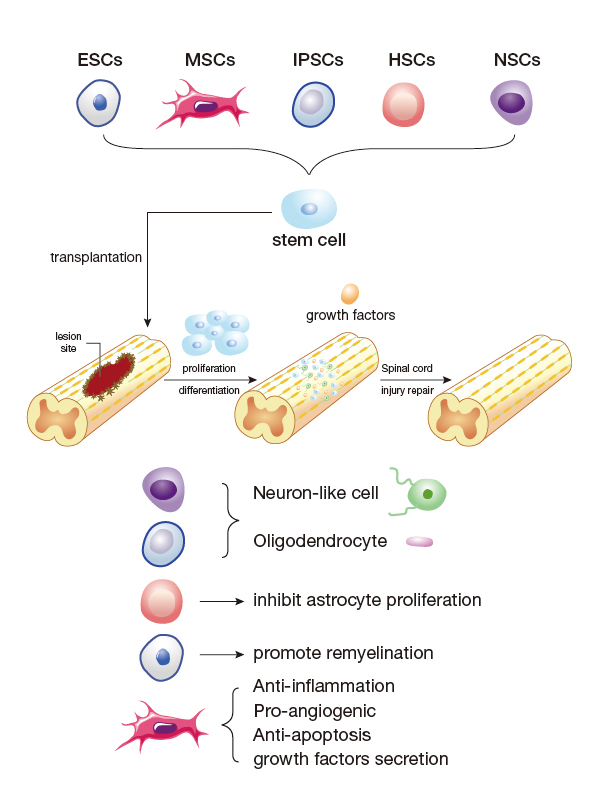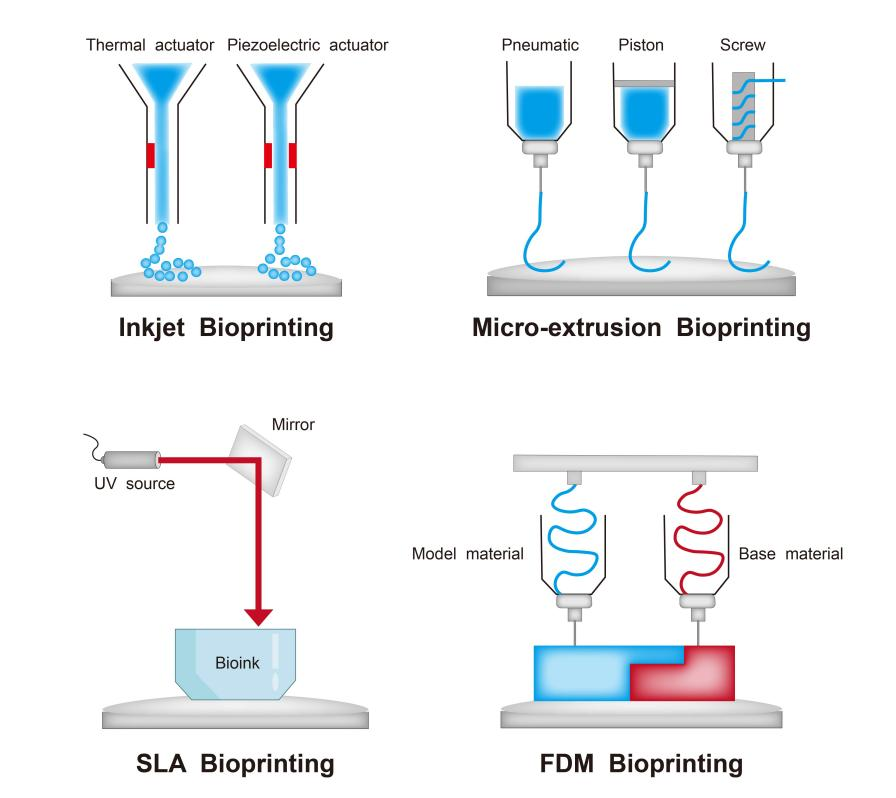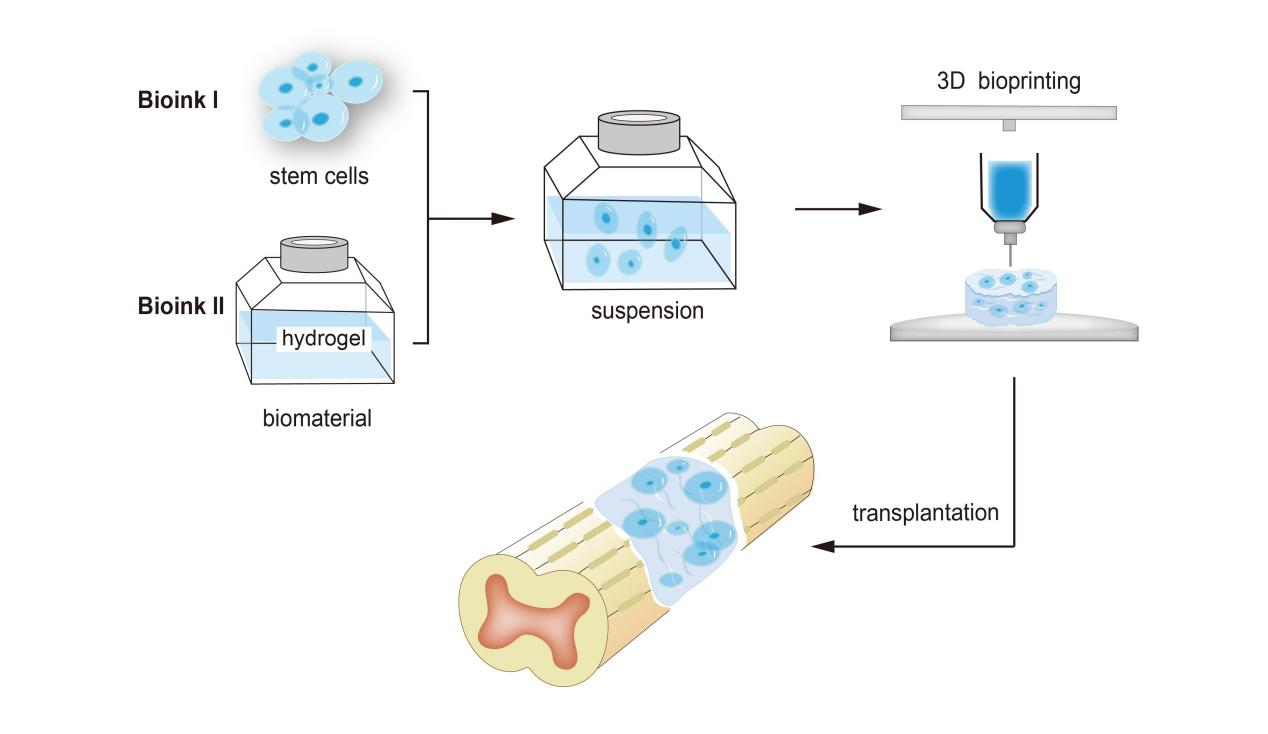中国神经再生研究(英文版) ›› 2024, Vol. 19 ›› Issue (8): 1751-1758.doi: 10.4103/1673-5374.385842
干细胞联合三维生物打印支架修复脊髓损伤受损的神经回路
The combined application of stem cells and three-dimensional bioprinting scaffolds for the repair of spinal cord injury
Dingyue Ju1, Chuanming Dong1, 2, *
- 1Department of Anatomy, Medical College of Nantong University, Nantong, Jiangsu Province, China; 2Key Laboratory of Neuroregeneration of Jiangsu and Ministry of Education, Co-innovation Center of Neuroregeneration, Nantong University, Nantong, Jiangsu Province, China
摘要:
脊髓损伤被认为是最难修复的损伤之一,也是神经系统预后最差的损伤之一。脊髓损伤后,神经细胞的再生能力较差,其组织内会产生瘢痕,这使得受损的神经组织难以恢复其功能。传统治疗只能缓解继发性损伤,并不能从根本上修复脊髓,因此迫切需要新的治疗方法来促进脊髓损伤后功能的修复。目前,干细胞治疗脊髓损伤的方法正在逐渐成熟,且随着组织工程技术的发展,能精确地打印复杂结构的三维生物打印已引起广泛关注。因此,联合上述2种技术建立具有精确细胞定位的负载干细胞的三维打印生物支架,将能够修复受损的神经回路,进而对脊髓损伤有修复的潜力。此次综述讨论了单纯干细胞疗法的作用机制、不同类型的干细胞在脊髓损伤治疗中的应用以及三维生物打印支架的不同制作方法,重点关注干细胞联合三维生物打印支架治疗脊髓损伤的发展情况。
https://orcid.org/0000-0002-5835-5950 (Chuanming Dong)



